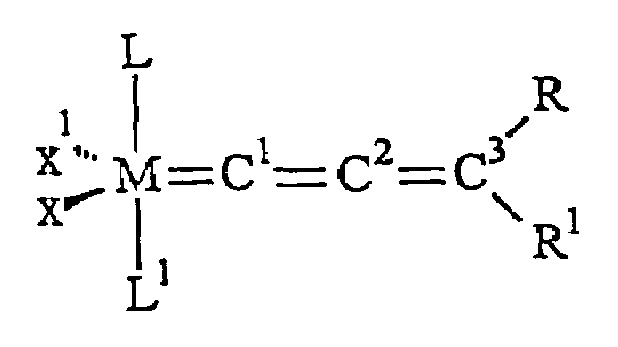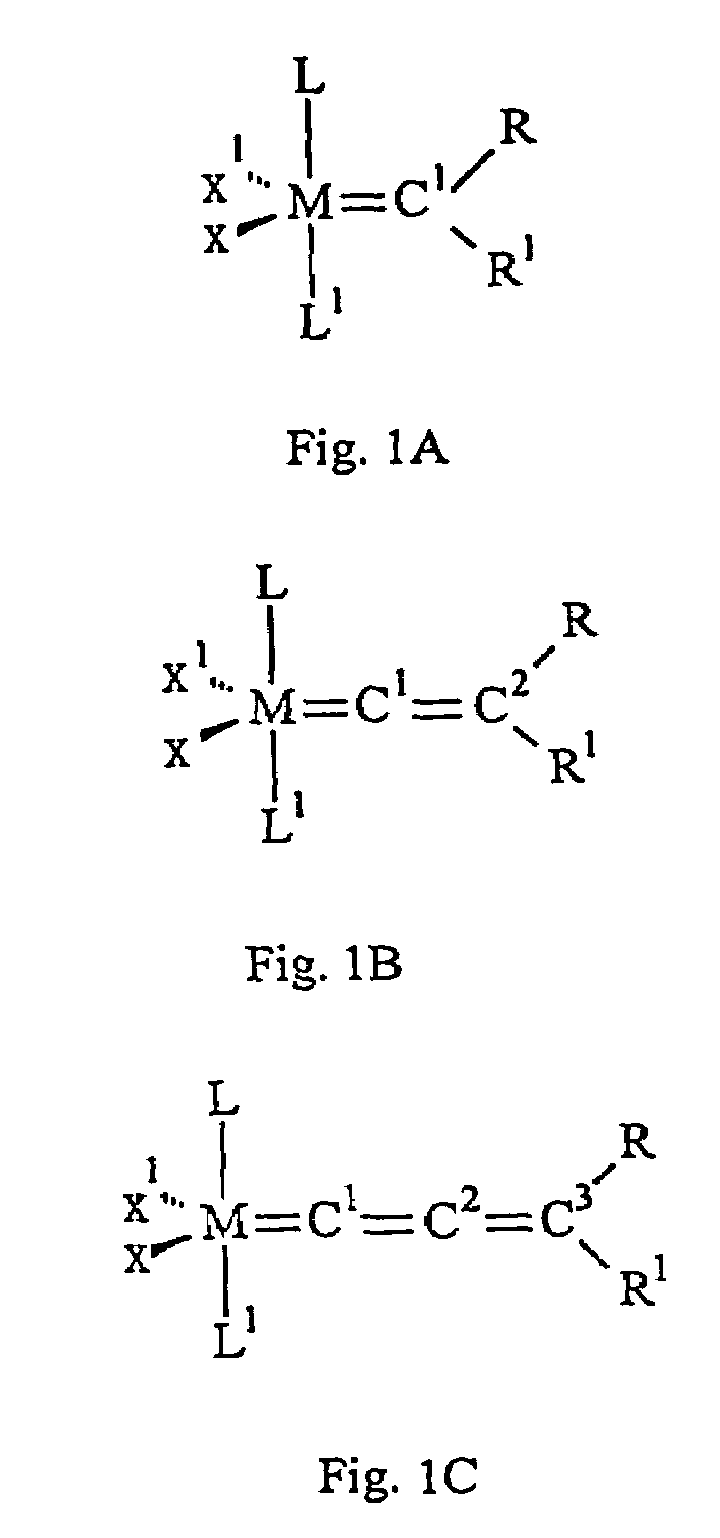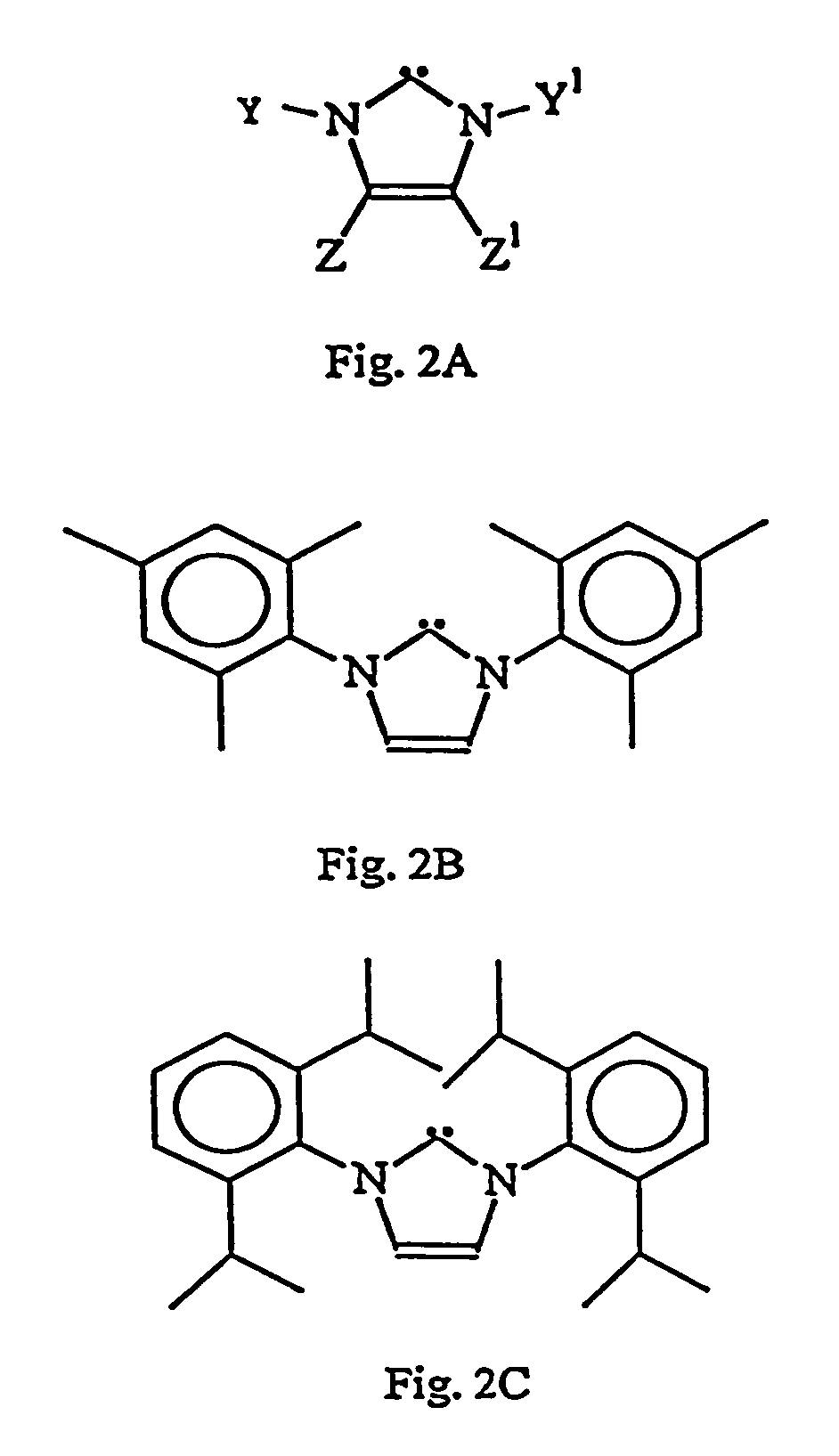Catalyst complex with carbene ligand
a carbene complex and catalyst technology, applied in the field of metal carbene complexes, can solve the problems of limited p—c bond degradation at elevated temperature, limited rate at which bis(phosphine) catalysts carry out particular reactions, and determine the stability of such systems, etc., to achieve high reaction rates, easy to synthesize, and high catalytic activity
- Summary
- Abstract
- Description
- Claims
- Application Information
AI Technical Summary
Benefits of technology
Problems solved by technology
Method used
Image
Examples
example 1
Synthesis of IMes-HCl
[0073]A 300 mL Schlenk flask was charged with 2,4,6-trimethylaniline (10 g, 74 mmol), toluene (50 mL), and paraformaldehyde (1.11 g, 37 mmol) under argon and heated to 110° C. until all the paraformaldehyde was dissolved. The flask was then cooled to 40° C. and HCl (6.17 mL, 6N, 37 mmol) was added to the reaction mixture drop wise. The mixture was stirred at that temperature for 10 minutes before dimethoxyacetaldehyde (6.442 g, 60% wt. in water, 37 mmol) was added in drop wise fashion. The flask was then equipped with a Dean-Stark trap and heated to 120° C. for 15 hours, during which time a dark precipitate was formed and grew in volume by removal of the side-products (H2O and methanol) and some of the solvent through the Dean-Stark trap. The reaction mixture was then allowed to cool to room temperature and stirred at that temperature for two hours. Filtration of the precipitate through a Schlenk frit, washing with tetrahydrofuran (three times, 20 mL each wash),...
example 2
Synthesis of IMes
[0074]In a glovebox, a 300 mL Schlenk flask equipped with a stir bar was charged with 20.0 g (58.7 mmol) of IMes-HCl and 120 mL of dry tetrahydrofuran. The resulting suspension was stirred for 10 minutes after which time 6.80 g (60.7 mmol) of solid potassium tert-butoxide was added to the suspension at room temperature in a single portion. A dark gray solution was obtained immediately. The flask was taken out of the glovebox and connected to the Schlenk line. The solution was stirred for 20 minutes before all volatiles were removed under vacuum. The residue was extracted into warm toluene (120 mL+60 mL+20 mL) and filtered through a medium porosity frit (filtration was rather slow), and the solvent was removed under vacuum to obtain crystals of IMes. The resulting product was recovered in 90% yield, and had a dark tint but was sufficiently pure for its use in further synthesis. Further purification could be achieved by recrystallization from toluene or hexane, yieldi...
example 3
Synthesis of (IMes)(PCy3) (Cl)2Ru(═CHCH═CMe2)
[0076]The procedure was carried out under purified and dried argon atmosphere and with dried and degassed solvents. IMes (2.1990 g, 7.221 mmol) was suspended in 250 mL hexanes, into which (Cl)2(PCy3)2Ru(═CHCH═CMe2) (5.0718 g, 7.092 mmol) was added in one portion. The mixture was heated for 2.5 hours with stirring at 60° C. During this period, the formation of an orange-brown precipitate was observed. The volume of the suspension was then reduced in vacuum to 50 mL and the suspension was cooled to −78° C. Following filtration and cold pentane washing of the residue (2 washes, each 20 mL), the product was isolated as a brown orange microcrystalline material in 72% yield (3.97 g).
PUM
| Property | Measurement | Unit |
|---|---|---|
| Stability | aaaaa | aaaaa |
| Electronegativity | aaaaa | aaaaa |
Abstract
Description
Claims
Application Information
 Login to View More
Login to View More - R&D
- Intellectual Property
- Life Sciences
- Materials
- Tech Scout
- Unparalleled Data Quality
- Higher Quality Content
- 60% Fewer Hallucinations
Browse by: Latest US Patents, China's latest patents, Technical Efficacy Thesaurus, Application Domain, Technology Topic, Popular Technical Reports.
© 2025 PatSnap. All rights reserved.Legal|Privacy policy|Modern Slavery Act Transparency Statement|Sitemap|About US| Contact US: help@patsnap.com



